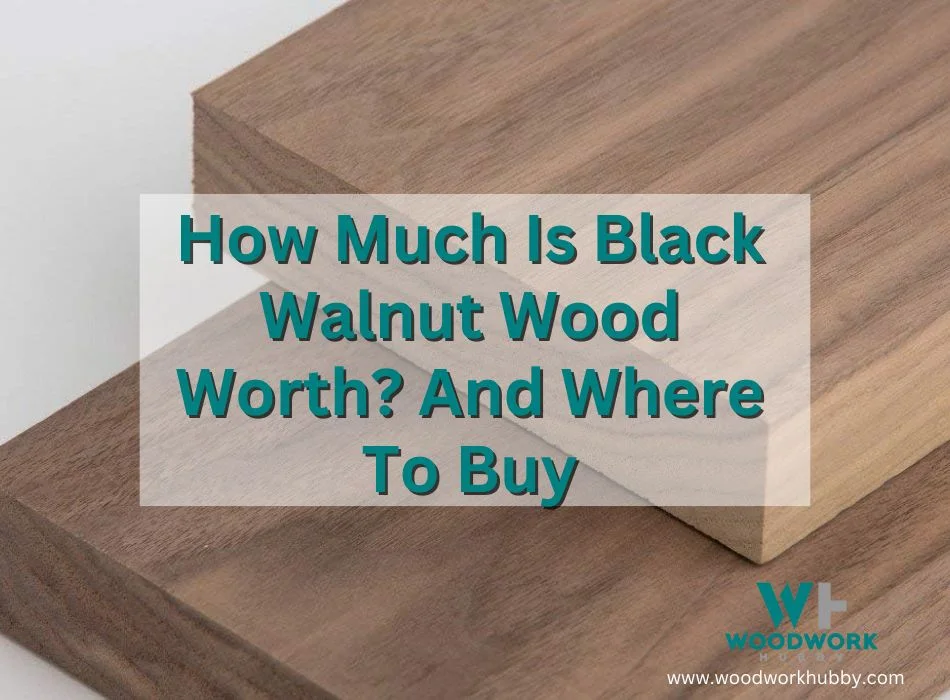I recently had to make a sideboard and wanted some black walnut wood as it has a luxurious feel. I hadn’t bought any for a while and wondered how much is black walnut wood worth. I rang around a few places and this is what I found out.
Black walnut wood is worth $20 per board foot and $350 per workable unit in average woodworking. This makes it one of the most expensive hardwoods that middle-class Americans can afford. Its aesthetic beauty, as well as its durability, are key contributors to its price.
In this article, I will go over black walnut wood’s value, its worth as an investment, and where to buy black walnut wood. The investment aspect will be explored in detail as well, and you will discover how you can automate the potential return.
Moreover, you will learn what you can expect to earn across different stages of the tree’s lifecycle. By the end, you will have a clear understanding of the black walnut wood market. But first, let’s look at the value of black walnut wood.
A video showing the value of black walnut wood.
Is Black Walnut Wood Valuable?
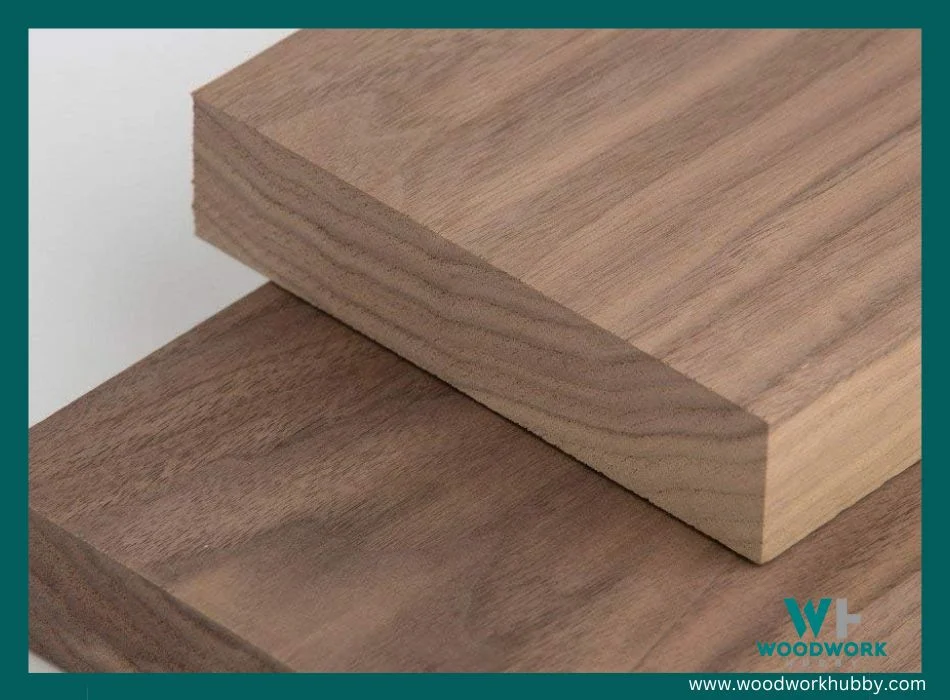
Black walnut wood is valuable because it can be used in prestige projects and is in demand among the affluent. It is not rare or as difficult to grow as some other expensive woods like Ebony.
But overall, the trend has been towards darker furniture wood and naturally aesthetic timber. Because of this, the overall woodworking market is skewed toward wood with aesthetic grain and a darker natural appearance.
How Much Is Walnut Wood Worth?
Price varies on the size you are chasing. Recently I bought a full slab that was 6′ long (1800mm) x 4′ wide (1200mm) and I paid $2,500 for it. Black walnut however is more expensive again.
Black walnut wood is appreciated for its beauty, durability, and elusiveness in the pedestrian furniture markets. It is not bought as often by budget buyers and bargain chasers. As a result, it has become a symbol of opulence.
Even lower-grade black walnut wood, commands a high price.
What Is the Price of Black Walnut?
The entry-level price of a black walnut woodworking lumber unit is $250. At this price, you can get a small board that you can use within a project. This price can go up to $6,800 based on size alone. The black walnut market is accessible to people of varying income, from the upper-middle-class to the Ultra-High net-worth individuals.
Typical black walnut lumber can range from $350 to $1200 on average. However, larger wood slabs can cost well over $6,000 because of the volume of wood used. Black walnut’s price is dictated by its grade, demand, availability, and a few regional factors.
To make sure you buy (or sell) black walnut at a price that’s in your favor, you need to figure out the black walnut price per board foot.
To make sure you buy (or sell) black walnut at a price that’s in your favor, you need to figure out the black walnut price per board foot. This will help you scale the price to the size of lumber you’re buying or selling without overestimating or underestimating its value.
What Is A Standard Unit Of Timber?
I thought I should explain what a standard unit of timber is as referred to in this article.
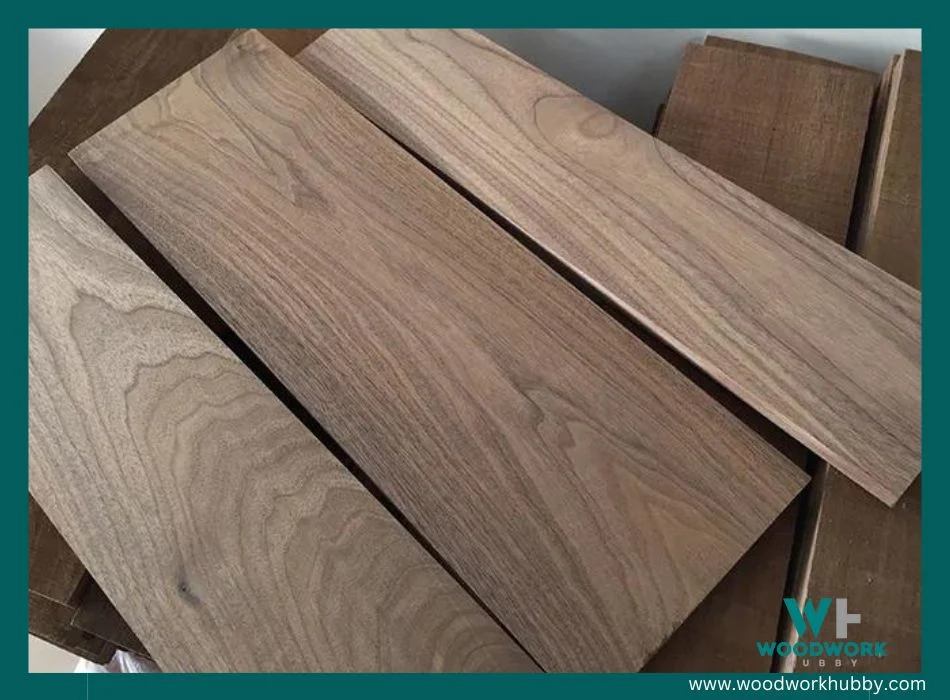
A unit of timber is an older term meaning a stack that contains approximately 120 boards that are 12-14 feet long x 9 inches wide x 3 inches thick. This varies from place to place and is not used as much anymore. A more common term used is cubic feet.
You may see more details on a timber unit here.
How Much Is Black Walnut Worth a Board Foot?
Black Walnut is worth $17 to $18 per board foot. Given that furniture projects require dozens of board feet of wood, it is evident that the price can add up to cost points out of the lower-middle-class’s reach. From that perspective, Black Walnut Wood can be seen as a pricier timber.
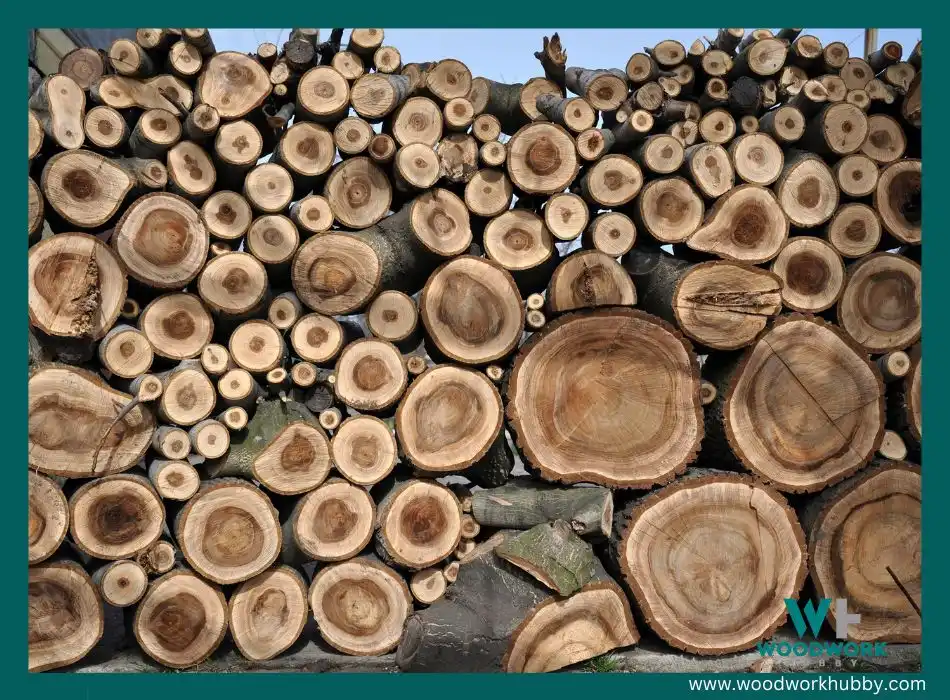
However, Black Walnut wood is not among the super expensive wood types that would make high net-worth individuals pause. It can be seen as rich people’s maple wood but from cost-point alone.
Maple, of course, has a different aesthetic and shade compared to black walnut. But because black walnut wood is considered an affordable prestige timber, you might find it being sold in the same place where maple is sold.
When working with walnut, be sure to use safety equipment. I wrote this article on can walnut wood cause allergies.
Factors That Influence Black Walnut Price
From my experience with black walnut wood, there are 3 main factors that influence the price of black walnut in the current market.
Tree Quality: The quality of the black walnut tree itself plays a significant role in determining its price. Trees with straight, defect-free trunks, consistent heartwood color, and minimal knots or imperfections are highly sought after and can command premium prices.
Additionally, the age and size of the tree, as well as the presence of unique figuring like burl or crotch wood, can also impact its value. Well-maintained and healthy trees tend to yield higher-quality wood, which in turn fetches better prices in the market.
Shipping: The cost of shipping and logistics can affect the overall price of black walnut wood. Factors such as distance to the sawmill or buyer, transportation method (e.g., trucking or shipping by sea), and the availability of suitable packaging materials can all impact the final price.
Efficient shipping practices and proximity to processing facilities can help reduce transportation costs, making the wood more competitive in the market.
Harvest Quantity: The quantity of black walnut wood available in a specific region or market can influence its pricing. When there’s a limited supply due to factors like forest management practices or harvesting restrictions, the wood tends to command higher prices.
Conversely, an oversupply of black walnut wood in the market can lead to lower prices. Careful planning and sustainable harvesting practices can help maintain a balance between supply and demand, ultimately affecting pricing dynamics in the industry.
Understanding these factors is crucial for buyers and sellers in the black walnut wood market, as they can help determine fair prices and make informed decisions when dealing with this valuable hardwood.
Best Places To Buy Black Walnut
Black walnut wood can be purchased from big box stores, lumber yards, and specialized retailers. But the best place to buy black walnut is usually closest to black walnut growers. The closer you get to the source, the lower the price of the lumber. Moreover, it eliminates the chances of interference, degradation, and aging.
Here are some of the best places to buy black walnut lumber:
- Specialized black walnut lumber yards – Generally, lumberyards that specialize in black walnut products only often get their materials in bulk. So these lumberyards get black walnut at a cheap price point. Whether they pass this advantage to their consumers depends on the individual businesses.
- Black walnut suppliers – Black walnut suppliers often grow their own black walnut trees. Whenever that’s the case, you get the price advantage of cutting out the middleman.
- Lumber suppliers in Texas – Black Walnut trees grow well in the southwest to central Texas. Proximity to the source might make the black walnut that you get cheaper and of better quality.
- Lumberyards in Georgia – You can also grow black walnut trees with ease in border regions of Georgia, which can make the supply cheaper.
- Lumber suppliers in South Dakota – South Dakota has plenty of black walnut tree growers, and therefore, the competition produces better quality at a lower price.
- Florida Lumberyards – Black Walnut is easily available in Florida, making it cheap and of better quality in the regional lumber yards.
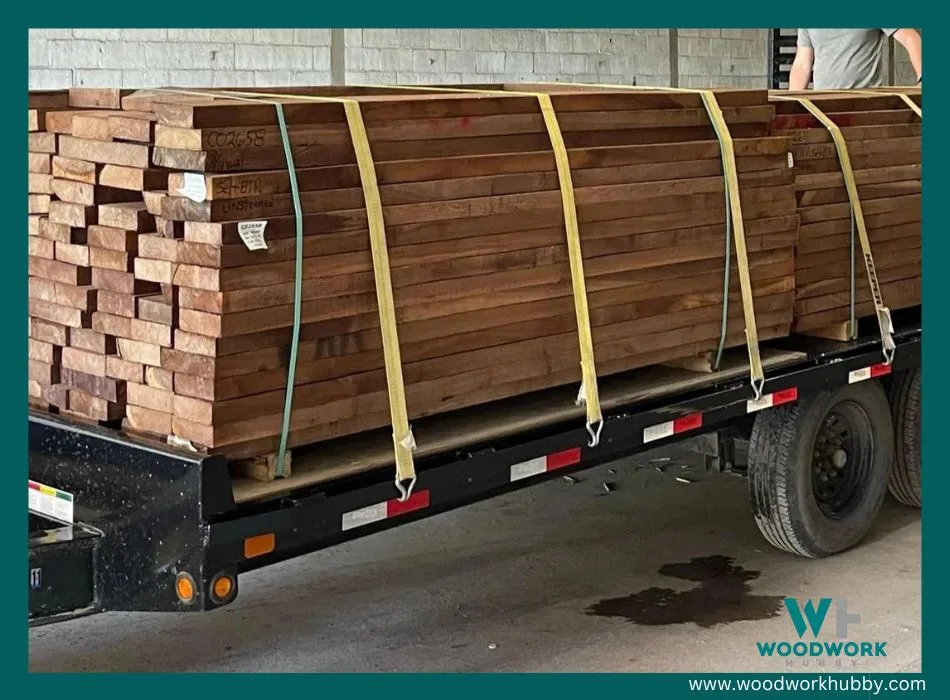
Advantages Of Walnut Wood
Here are the main advantages of walnut wood and these reasons are why I love using it:
Stunning Color: Walnut wood boasts a rich, dark brown to almost black color, elevating the aesthetic appeal of furniture and woodworking projects with its natural beauty.
Excellent Finishing Qualities: Walnut wood takes stains and finishes exceptionally well, enabling woodworkers to achieve a smooth and flawless surface easily, enhancing its overall appearance.
Extreme Durability: Beyond its visual appeal, walnut wood is highly durable, naturally resistant to decay, and capable of withstanding daily wear and tear, making it an ideal choice for long-lasting, quality wood products.
See my explanation on is walnut wood food safe. It’s important to know this before making things like cutting boards etc.
Are Black Walnut Trees a Good Investment?
Black walnut trees are a good investment in the long run. They have a decent midway exit potential, but to make the most money from your initial investment, you should be willing to delay wood harvesting for at least two decades. Returns start looking handsome in the 7th year.
That’s as long as my woodworking experience! But an investment’s value is not dictated just by how long you have to wait to get the optimal maximum but by what the rate of return is on said investment. The average return on black walnut trees is around 7% in regions where they are abundant and 10% where they are scarce but have a market.
This assumes that the prices stay the same. Over the years, the inflation in black walnut prices suggests that there is a 3% to 6% price hike over a 10-year period. So the overall return on investment from black walnut trees is 10% to 15% in the long run.
Is that a good investment by Wall Street standards? Definitely. Is it a good way to make quick money? Not really. Black walnut trees can be a part of your retirement portfolio but aren’t a good side hustle.
You get a return higher than the stock market and closer to real estate without having the expensive entry point of real estate.
You get a return higher than the stock market and closer to real estate without having the expensive entry point of real estate. But at the same time, you need to have land where the trees can grow and must put effort into protecting and preserving them, especially in the earlier stages.
If you are planning to invest in black walnut wood, you may want to know if burning walnut wood is toxic.
What Makes Black Walnut Trees Valuable?
Black walnut trees are valuable because they yield a decent amount of high-value timber and produce walnuts that can be consumed or sold in the meantime. Black walnut lumber’s aesthetic beauty and durability contribute to the value of the source tree.
Every investment has value based on a few factors. One of those is the passiveness of the investment. Active investments can yield up to 100% return. In contrast, passive investments can produce lower returns and still be considered valuable. T
hat’s because one can have many passive investment vehicles under one portfolio, but there are a finite amount of active investments one can partake in.
Black walnut trees are valuable because they balance an active aspect with a passive aspect. They make an effort to grow, but as they start growing, they provide a higher return with fewer requirements. As a result, they become more passive. The scalability of black walnut investment depends on the land available.
A black Walnut plantation can be a great intermediary that takes all the active aspects for a cut and allows you to invest passively in black walnut trees.
Moreover, you don’t have to be limited to the size of your backyard or the cultivatable area in your possession. However, the price of a tree acquisition is different with plantations compared to cultivating the same tree at home.
How Much Do Black Walnut Trees Cost?
Black Walnut Trees can cost $5 to $25 depending on their size in the incubation period. However, once the trees are past seven years old, they are considered a recurring income asset, which is when they aren’t sold to new plantations. If you choose to invest in a plantation or walnut growth fund, you have to make a minimum investment of $150 on average.
Ultimately, the price point is low in both cases if you view them in context. Given that the tree can cover its cost of acquisition within 4 years, whether it is acquired as an active asset or a passive one, you can yield decent returns after seven years.
How To Make Money With Black Walnut Trees?
There are two ways to make money from Black Walnut Trees. The first is to plant them yourself and the second is to invest in a fund that owns a plantation. In both cases, you can expect a decent return starting from the 7th year.
In this section, we will explore how you can make money from Black Walnut Trees.
There are three modes of investment in black walnut trees, and they have their own means and rates of return. The highest rate of return mode is the woodworker mode. In this type of investment, you have not just your capital at stake but also your sweat equity.
This is the most active mode of investment, where you start with acquiring black walnut wood and then start crafting it into functional or fine art products.
These products can then be sold to consumers directly or through a third-party store. In both cases, you make money when the product is sold. It is a very risky endeavor as there is a possibility that the project will not sell for the price of the wood that was used to make it.
But on the upside, it can see for hundreds of dollars more than the cost of the base lumber. I wouldn’t personally invest in this type of investment. It is too risky. If a client wants something made from black walnut, I’ll buy the lumber after receiving a deposit.
Planting and selling lumber is the second mode of investment. This becomes more passive by the 4th year. It can never be entirely passive, though, because even if the tree grows itself, you need to chop it before selling the lumber. In other words, it is a semi-active means at best and a full-time job at worst.
As you start aging, it becomes harder to chop wood. And given that a black walnut tree can keep giving wood for up to 40 years, there is no way to capitalize on its full potential without hiring others to do the plant care and chopping.
That said, a single tree does not have enough of an output to pay for employees. So you need to plant at least 10 black walnut trees to have a sustainable return once the trees start producing. That’s a whole business, and every business has its pros and cons.
The final thing you can do is invest in a walnut plantation. The Walnut Fund and similar businesses allow everyday individuals to take a stake in a walnut tree. The minimum investment is north of $150, which is a big leap from the $10 you’d spend to get a small black walnut tree.
But your investment in a plantation covers the cost of care as well. When you start receiving a return, the money is split between you and the fund. You receive a percentage of the output of the tree, and for the percentage that the plantation keeps, it handles the care and harvesting alongside the supply and sales aspect.
What’s the Earning Like?
Earning depends entirely on the tree’s yield and the market alongside where the tree is in its growth stage. You can expect your investment to return in full in the second year if you’re actively cultivating and managing the tree alongside its output. If the investment is passive, the return goes past the breakeven point by the 4th year.
In both cases, you can start expecting handsome returns from the 7th year to the 40th year of the tree’s life. From 40 to 60, the yield can drop.
Final Thoughts – Cost Of Black Walnut Wood
Black Walnut wood is worth $350+ for most usable units. It is in demand and has had consistent growth in price. Buying and holding black walnut lumber can be a good short-term strategy but won’t yield a sizeable return.
But over the long run, an actual tree can be a good investment. And thanks to black walnut tree investment funds, you can get a stake in the market without actively being a black walnut tree farmer.
FAQ’s
How Much Is Hammons Paying For Black Walnuts?
I know this is slightly off-topic but I get asked this a lot. This price can vary from year to year depending on factors such as supply and demand, crop quality, and the region where the walnuts are harvested. For the most accurate and up-to-date information on Hammons’ pricing, it is recommended to contact them directly or visit their official website for the latest pricing details.
Is Walnut a Precious Wood?
Walnut is considered a precious wood in the world of woodworking and furniture craftsmanship. Its precious status is attributed to several factors:
- Stunning Aesthetic Qualities
- Excellent Workability
- Historical Significance
- Durability
While walnut may not be as rare or expensive as some exotic hardwoods, its combination of beauty, workability, historical significance, and durability make it a precious and highly sought-after wood in the world of woodworking and craftsmanship.
Is Black Walnut More Expensive Than Oak?
Black walnut is generally more expensive than oak. Black walnut is considered a premium hardwood due to its unique characteristics, including its stunning color, fine grain, and excellent finishing qualities. These qualities make it highly sought after for fine furniture and woodworking projects, and as a result, it tends to command a higher price in the market.

